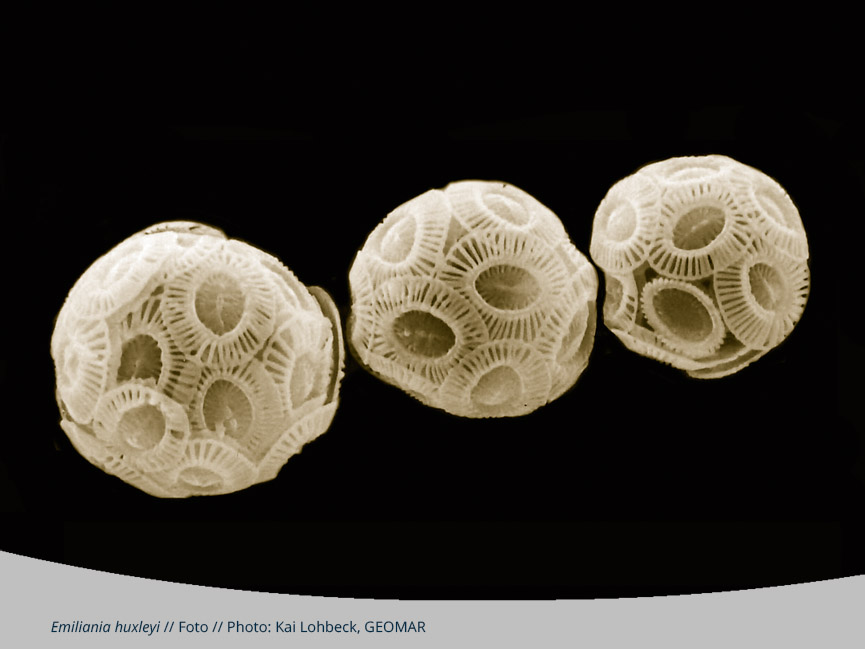
What’s next, Emiliania huxleyi?
Case study
The single-celled calcifying phytoplankton species Emiliania huxleyi produces a considerable amount of biomass and calcium carbonate in the ocean, supports the uptake of carbon dioxide at the surface and releases the climate-cooling gas dimethyl sulphide (DMS). It is almost impossible to imagine the marine elemental cycle without the tiny all-rounder. But this is exactly what scientists expect based on laboratory and field experiments. A downturn of the world’s most abundant and most productive calcifying organism would have a severe impact on the climate system.
When isolated and exposed to ocean acidification in controlled laboratory experiments, growth and calcification rates of the planktonic alga were only slightly reduced. To some extent, it was even able to counteract the negative effects of ocean acidification through evolutionary adaptation.
But in a KOSMOS mesocosm field experiment investigating its response to ocean acidification in its natural environment, the organism was not able maintain its population size. It failed to form the extensive blooms which it normally does throughout the global ocean.
Emiliania’s downfall started well before the bloom period. A reduction in cell growth due to ocean acidification as small as previously observed at the laboratory, caused the population size to gradually decline during the pre-bloom phase. When it was time for Emiliania to start bloom formation, there were so few cells left in the plankton community that it could not outgrow its competitors anymore.
Single-celled calcifying phytoplankton such as Emiliania huxleyi are also called coccolithophores because of the coccoliths or calcareous plates in which they wrap their cells. Coccolithophores have existed in the world’s ocean in many shapes over the past 200 million years. But now their survival seems to be dependent on the trade-off between the energetic costs for calcification under more acidified conditions and the benefit of the calcareous shells.
Researchers assume that the coccoliths serve as protection against predators. But the platelets cannot save the microscopic algae from the threat of climate change. On the contrary, creating this armour might require too much energy for them to survive and maintain their important function for our global climate.
Learn more about BIOACID research on Emiliania huxleyi in this video portait of Dr. Lennart Bach.
NEXT: Foodweb changes